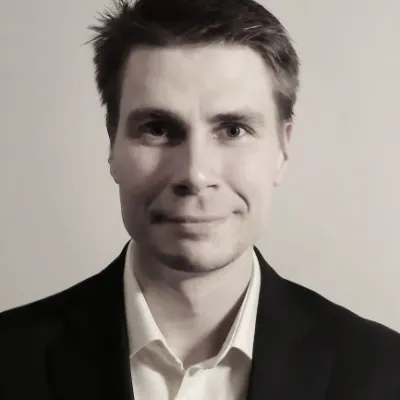Carbon dioxide removal (CDR) and Carbon Capture, Utilisation, and Storage (CCUS) technologies are needed to reach the Paris Agreement targets for climate change mitigation. These technologies and practices, once developed and deployed at large scale, will allow to physically remove CO2 from the atmosphere to store it permanently in geological formations and other long-term storage pools.
We are currently living in an era of a man-made climate crisis. Growing levels of atmospheric greenhouse gases (GHG), in particular, carbon dioxide, have been linked with rising average temperatures globally. To date, we have been increasingly relying on emission-intensive technologies and solutions in the energy, transport, materials, and agriculture sectors. Cumulative GHG emissions have been growing dramatically since early industrialization. It was estimated, that half of the cumulative carbon dioxide emissions since 1751 have been produced over the last 30 years.
Reducing emissions is not going to be enough
We can achieve substantial GHG emission reductions by incorporating carbon-neutral or low-carbon technologies. For instance, the emergence of renewable and low-carbon energy, electrification of transportation, and use of biofuels instead of fossil-based fuels are ongoing and anticipated emission reduction measures in energy and transport. However not all industries can quickly adopt carbon-neutral technologies, and some residual difficult-to-avoid emissions will also remain in the future.
The most recent IPCC report on climate change mitigation suggests that in order to compensate for unavoidable emissions, carbon dioxide removal (CDR), or carbon-negative technologies must be employed on a global scale, in addition to emission-reducing measures. Such technologies would allow removing CO2 from the atmosphere with high permanence and would allow the capping of overall net emissions to reach the Paris agreement targets for climate change mitigation.
What makes a technology carbon-negative?
Truly CO2-negative process can take place when three critical conditions are met:
- CO2 is captured directly or indirectly from the atmosphere, e.g. via direct air capture (DAC) or via biomass growth
- CO2 is stored as such or in the form of another highly stable product in order to prevent its release into the atmosphere
- The amount of permanently stored CO2 is higher than life-cycle emissions from capture and storage processes
The source of carbon largely defines whether CO2 removal can be achieved by a particular technology. If CO2 emissions from the coal-fired power plant are captured and stored to prevent the release into the atmosphere, we will reach emission reductions or carbon neutrality. However, if biomass growth is used to capture the CO2 directly from the air, storage of biogenic CO2, biochars or other products would result in net carbon removal. Direct Air Capture (DAC) technologies which do not require biomass growth have also been developed to enable the extraction of CO2 from the atmosphere using special adsorbents. DAC facilities can be flexibly located as they are not bound to any existing point source of CO2 emissions. However point sources can be more attractive to capture carbon due to higher concentrations of CO2, compared to the atmosphere. In the atmosphere, carbon dioxide only makes up about 400 parts per million, which makes it considerably more challenging to separate, while industrial flue gases may contain 10% and higher concentrations of CO2.
The permanence of CO2 storage is also crucial to reach net removal. If biogenic carbon dioxide is used to produce biofuels or other products which will be eventually converted to CO2 emitted to the atmosphere, no net negativity can be achieved. The following options are among those currently considered as providing permanent or long-term removal:
- Permanent storage of captured CO2 in geological formations
- Production of highly stable biochars via pyrolysis of biomass
- Storage of CO2 in concrete and artificial aggregates, e.g. for construction applications
- Conversion of CO2 into synthetic polymers for long-lifecycle applications, such as cables and pipes
Multiple combinations of capture and storage technologies are possible, all marked with their own sets of advantages and disadvantages. In general, all carbon removal technologies are associated with extra costs related to capturing, transporting, and upgrading CO2 to value-added long-lifecycle products. Depending on the technology, the costs of avoiding 1 ton of CO2 emissions may range from tens to hundreds of euros. Viable models to support investments in the area would need to be created, and additional regulatory measures are likely going to be necessary. Substantial R&D work is still needed to advance technical readiness and improve process economics for most CDR technologies.
Potential of CDR technologies in Finland
Finland is well-positioned to be at the forefront of developing and implementing carbon dioxide removal technologies. Unique know-how in sustainable forest management and a strong biobased product industry provides access to multiple feedstock pools for subsequent carbon capture and storage. Biogenic CO2 emissions from the forest industry alone are about 20 million tonnes annually, with the majority of those coming from point sources located at large bioproduct mills. Such CO2 streams can then be used e.g. in carbon storage projects or converted into other long-lived organic products. The availability of biomass side streams together with strong expertise in biochar creates an opportunity for substantial growth in biochar production. Finnish companies and research institutions are actively developing know-how in technical areas of carbon dioxide capture, purification, and its conversion to long-lifetime products. This all creates a strong starting position to lead the development and implementation of removal technologies in the Nordics in the near future.
This blog post is part of the Carbon Dioxide Use and Removal (CURPP) project funded by the Prime Minister’s Office of Finland. The project improves knowledge on the technologies, markets, regulation and policies on carbon dioxide capture, utilisation and storage (CCUS) and technical sinks.
Our final seminar will be held on March 29th, 2023 in a form of a hybrid event at Tiedekulma Stage, Helsinki at 9-11 EET.

